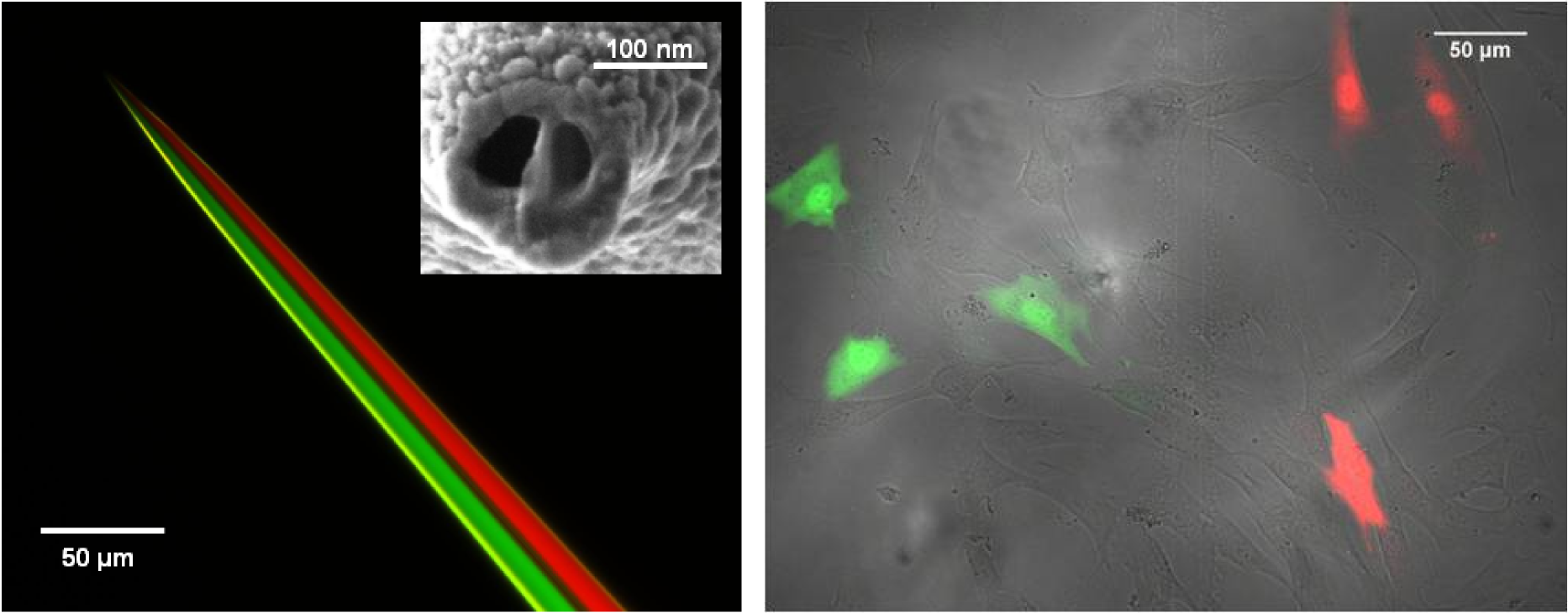A system that enables controlled delivery of materials into a single cell without the need for highly specialised manual operation has been developed by US scientists.
The system is fully electrical, is based on double-barrel nanopipettes and is capable of injecting a controlled amount of material into a single cell. It uses a scanning ion conductance microscope (SICM) to position a nanopipette within a few hundred nanometres of the cell membrane. The amount of material delivered to the cell is controlled by the amplitude and duration of an applied voltage. The team injected human fibroblasts with carboxyfluorescein as a proof-of-principle experiment.
Traditional micropipettes suffer from several drawbacks, e.g. large size relative to typical cells, low cell viability following injection and requirement of skilled operator. More recently developed atomic force microscopy-based nanoinjectors are limited in terms of throughput and control of injection volumes.
This new system overcomes many of these concerns, including very good cell viability (70-100 %), with normal cell division observed 27 hours post-injection. In addition, the authors were able to inject two different dyes into the cells without any cross-talk observed between the two; this gives rise to the possibility of build in more chambers and customise specific cocktails of molecules for different cells.
Read the ‘HOT’ Communication hot of the press!
Voltage Controlled Nano-injection System for Single-cell Surgery
R. Adam Seger, Paolo Actis, Catherine Penfold, Michelle Maalouf, Boaz Vilozny and Nader Pourmand
Nanoscale, 2012, Accepted Manuscript
DOI: 10.1039/C2NR31700A











